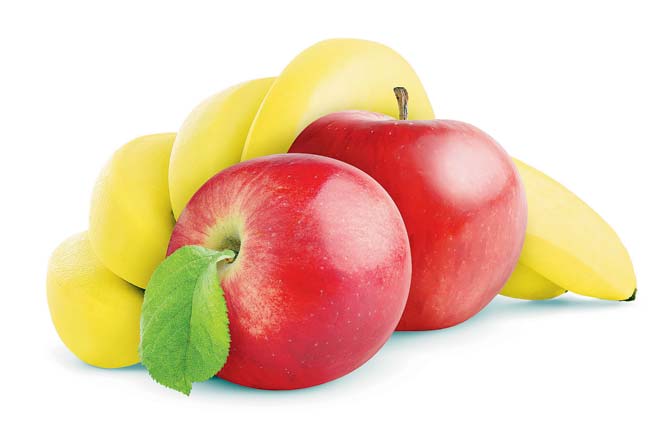Navratri revellers have turned satvik. While they do it for the Goddess, you go, give it a shot to energise your body and calm the mind


ADVERTISEMENT
What is the satvik diet?
The word satvik is derived from the Sanskrit term satva which means quality. Satvik food is light, fresh and easy-to-digest. It calms the mind and is rich in prana (loosely translated as quality of food). It promotes positive thoughts, happiness and satisfaction. This form of diet is mentioned in the Upanishads and other ayurvedic and yoga texts.

The purpose: The purpose of satvik food is to go beyond satisfying hunger pangs; it motivates one to look for a higher purpose in life. According to the principles of ayurveda, the energy derived from the food we eat has three basic qualities: satvik or pure/life-giving, rajasik or active/changing and tamasik or inert/lifeless. For example, a fruit on a mango tree may be ripe (satvik), some mangoes may be ripening (rajasik) and some may be soft-ripened and rotten (tamasik).
The satvik way of life: According to the philosophy, everything (not just food) in this world is divided on the basis of these three qualities, including people and places. Satvik food can turn into rajas or tamasik when it is over cooked, over spiced, pungent (like onions) or too sour. Even a frozen paratha (originally satvik) falls in the category of tamasik. Ancient texts don’t force you to choose satvik food. They give you the freedom of choosing food as per your purpose in life, keeping the outcome in mind.
What does it constitute?
It incorporates fresh, seasonal and wholesome foods. These include wholegrains (which are not eaten during Navratri), vegetables, fruits, cruelty-free milk, legumes, dals, raw honey, herbs and spices, nuts and seeds. All of these should be organic, non-processed and free of pesticides, fertilisers and growth hormones.

Following a satvik diet means one has to eat regional food with no additives, preservatives or fillers. Hygiene plays a huge role in satvik diet. Hence, it also advised that you don’t eat food cooked by a stranger. This is rooted in the belief of transmission of consciousness, from the one who cooks to the one who consumes.

Smitha Shetty and Charmaine D'Souza
How to optimise this diet?
The wrong combination of two satvik ingredients make it non-satvik, for example, milk and salt. While leafy vegetables are found in abundance in monsoon, because our immunity is sensitive in the season, they are not recommended. Food needs to be chewed properly and should be consumed in small portions. A buffet is out of the question. Eat meals within three hours of cooking. Some meals, (such as satvik laddoos) however, remain satvik beyond three hours. Eat early and on time.

What are the benefits?
It is claimed that the satvik diet will not only nourish and energise the body but also the soul and bring one to a state of mental peace and tranquility. Satvik foods are easily digested and increase our resistance to disease. They are said to help us stay focussed, physically active and lively while keeping our minds calm so that we are better equipped to handle the curve balls life throws at us. According to ayurvedic text Charkha Samhita, people who follow the satvik diet are gifted with memory, dedication, gratitude, are anxiety-free, well-directed, intellectual, and engage in virtuous acts.
Satvik food is low on glycaemic index, which means, it manages blood sugar well. It saves you from blood pressure trouble and is rich in alpha-linolenic acid (ALA), which is good for healthy hair and skin.
Inputs by nutritionist Charmaine D'Souza, and nutrition, fitness and yoga expert, Smitha Shetty
 Subscribe today by clicking the link and stay updated with the latest news!" Click here!
Subscribe today by clicking the link and stay updated with the latest news!" Click here!






